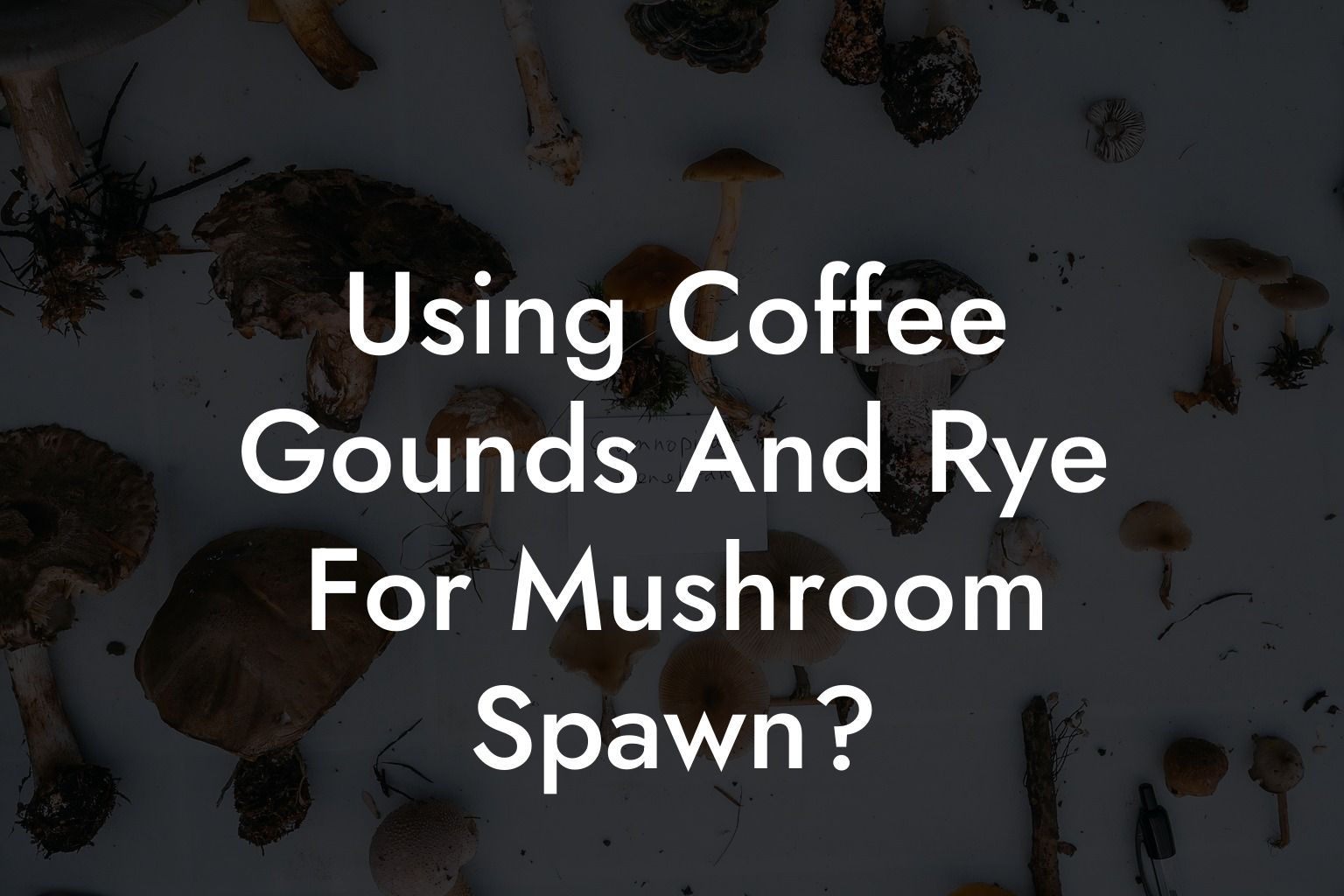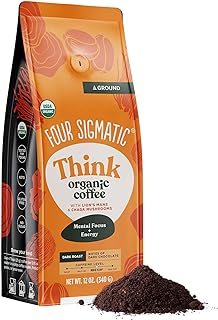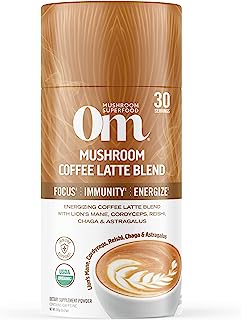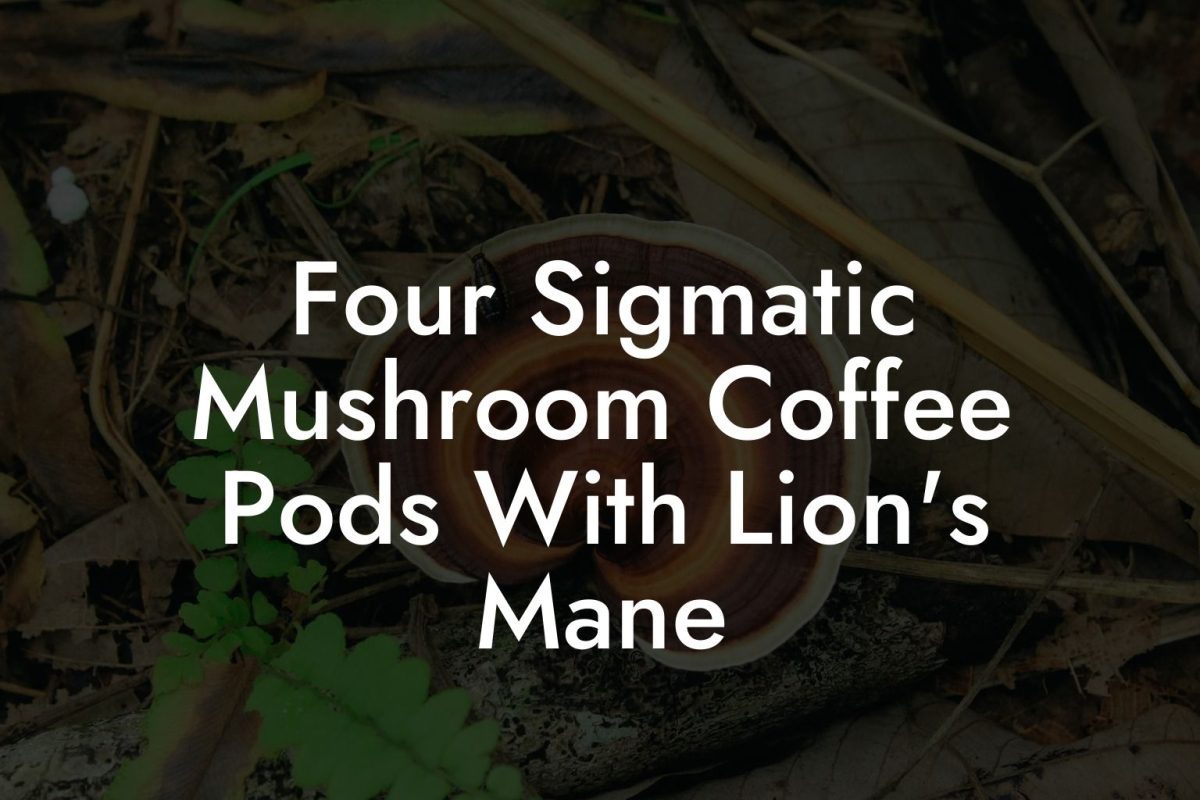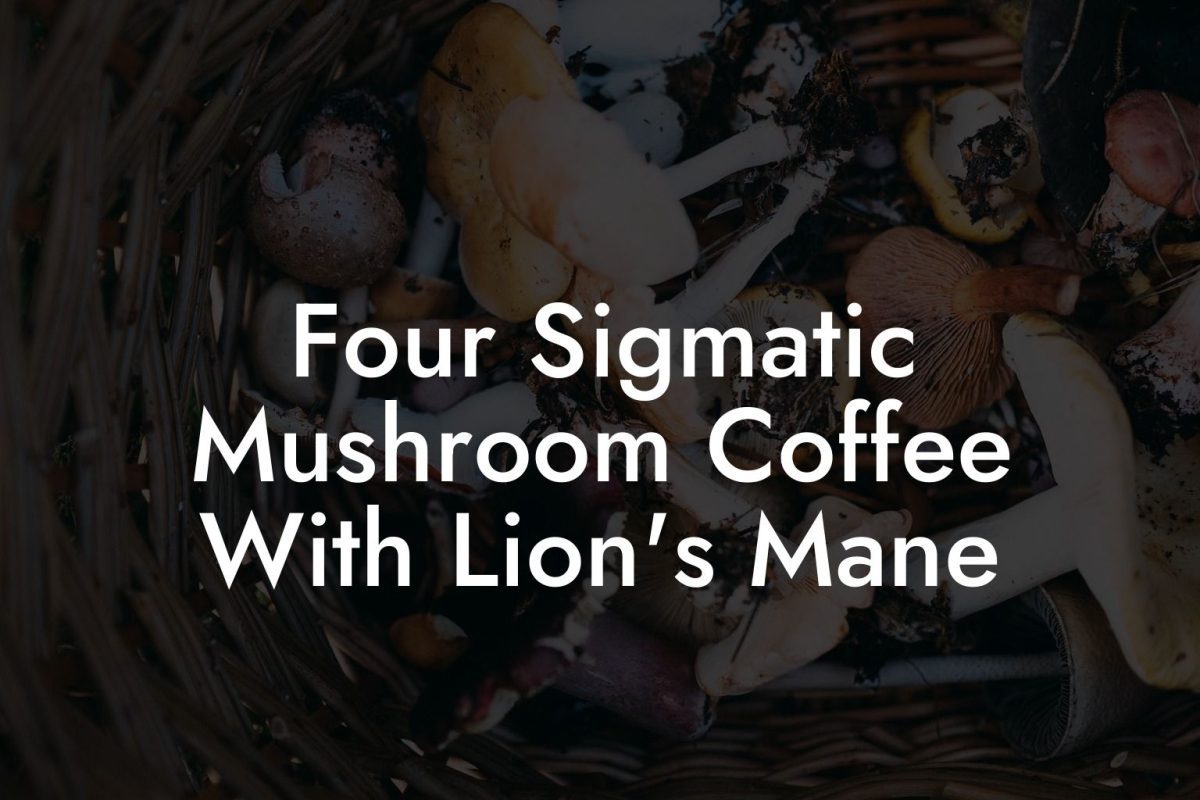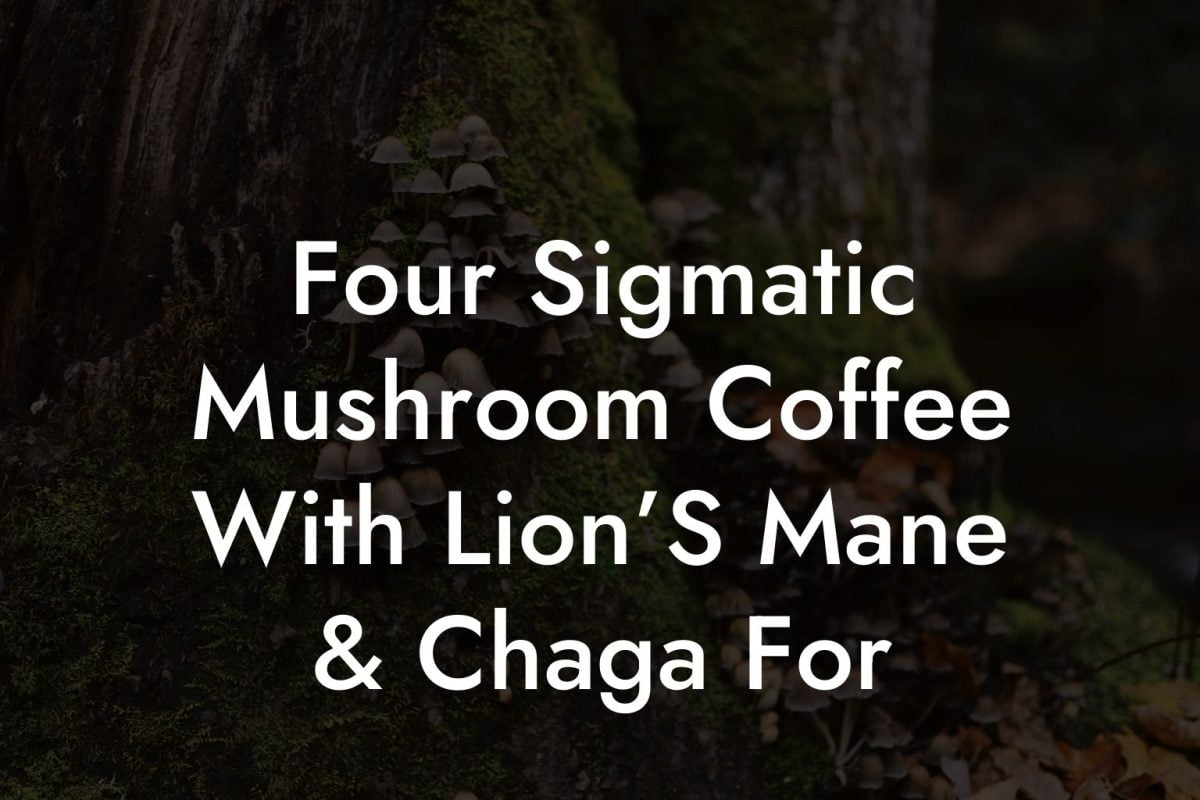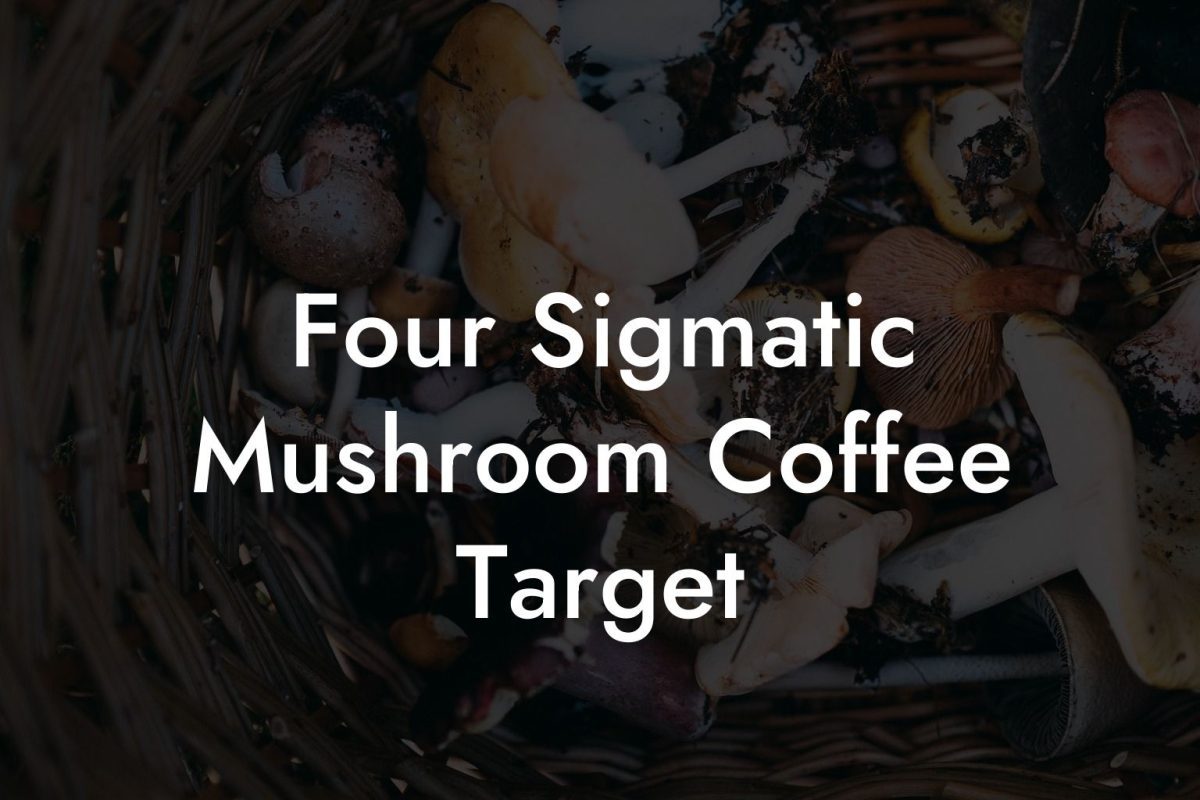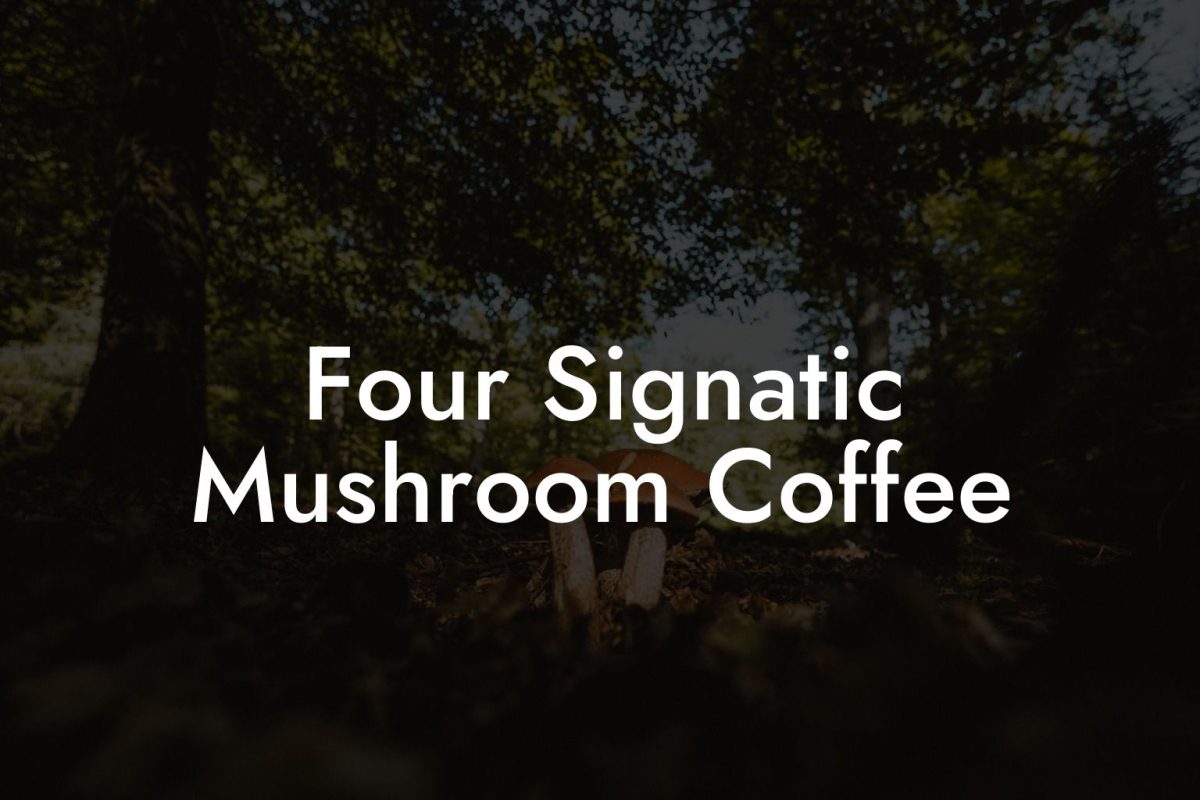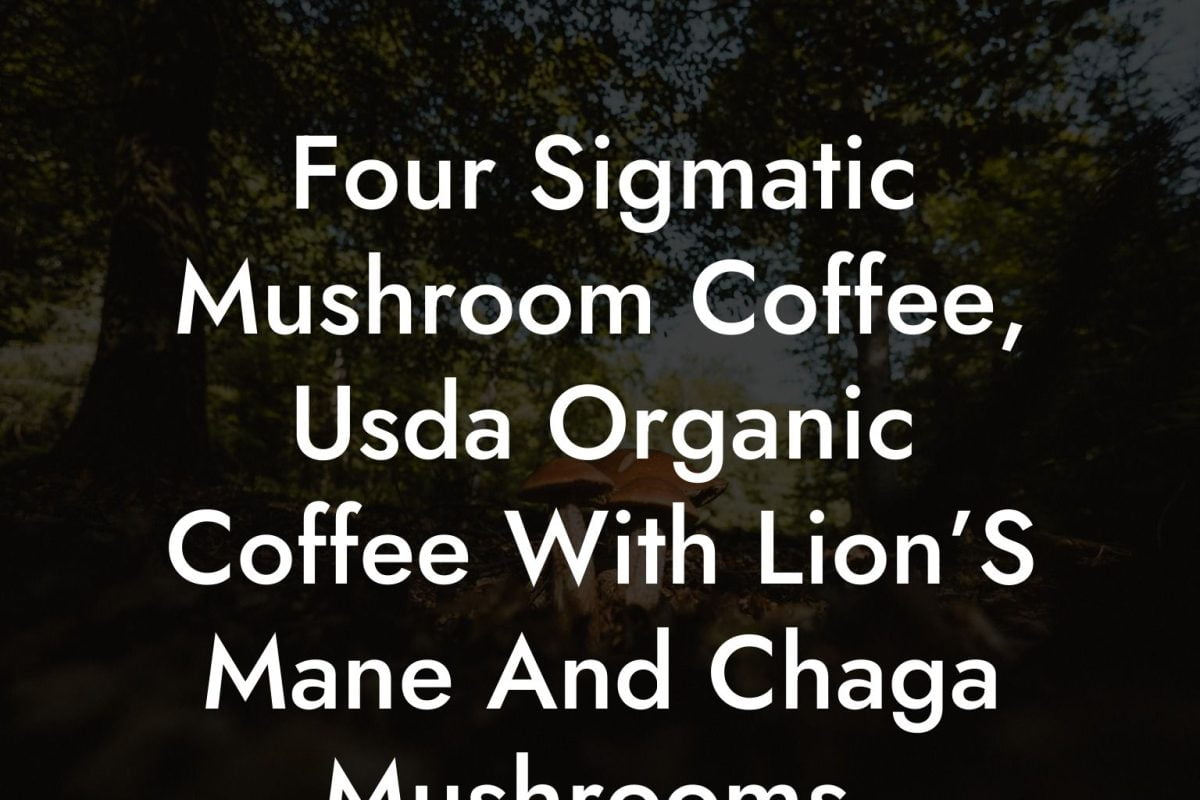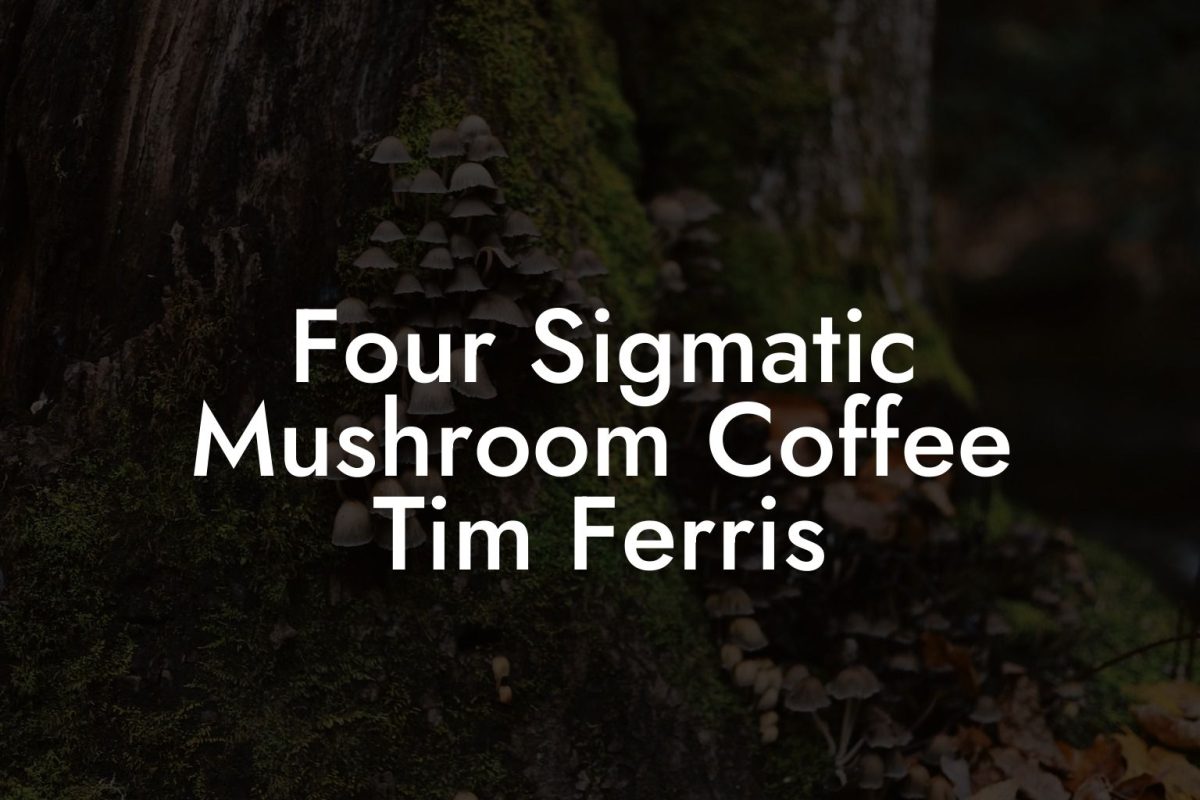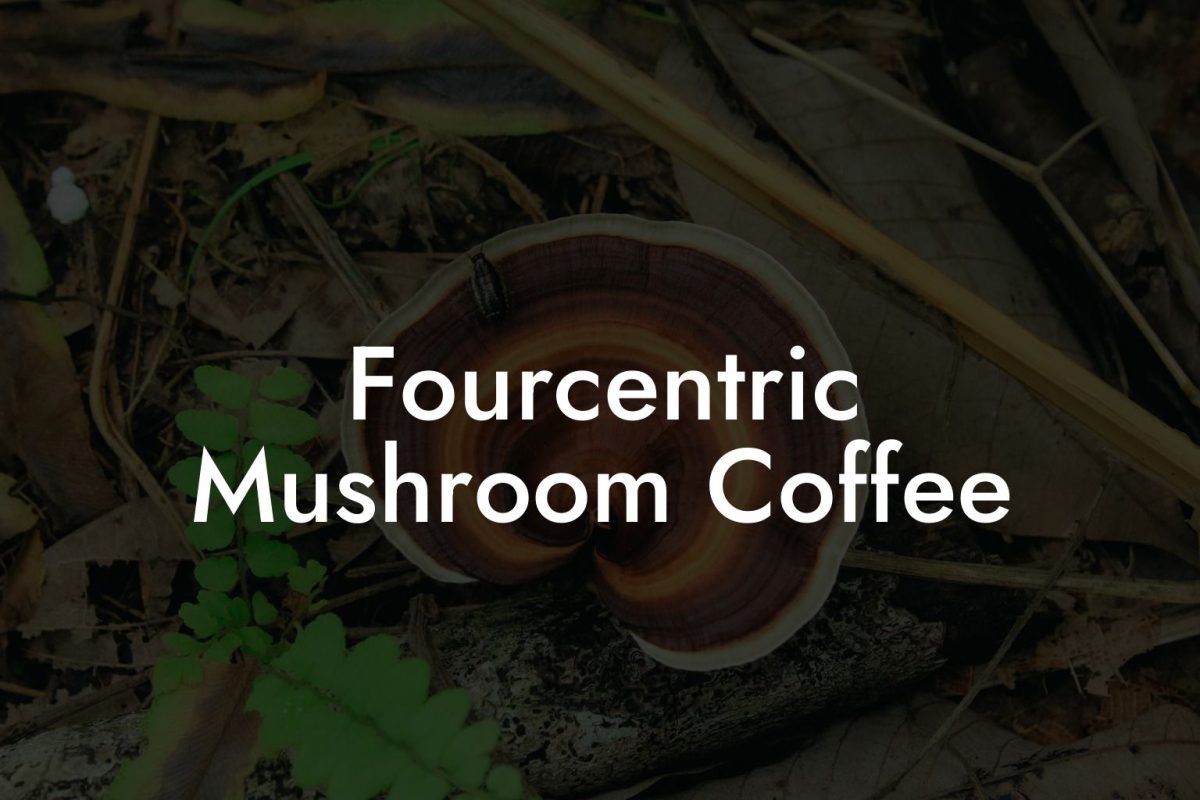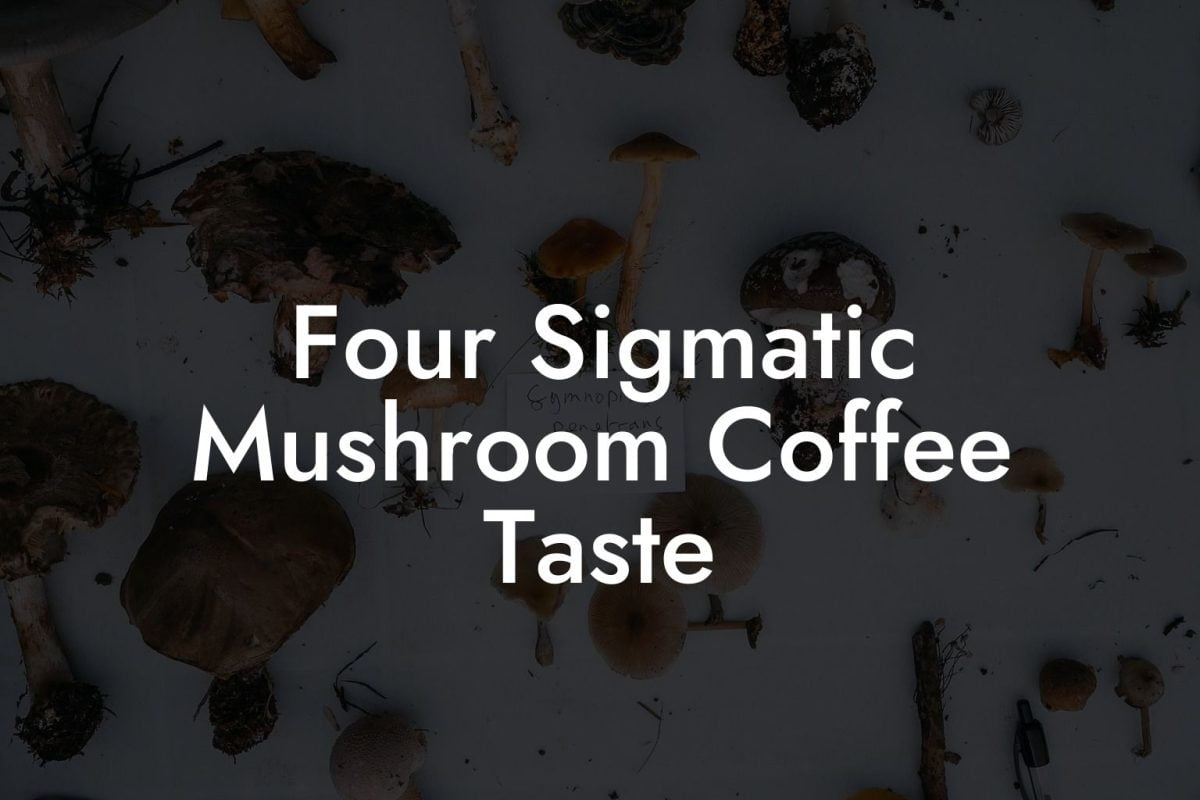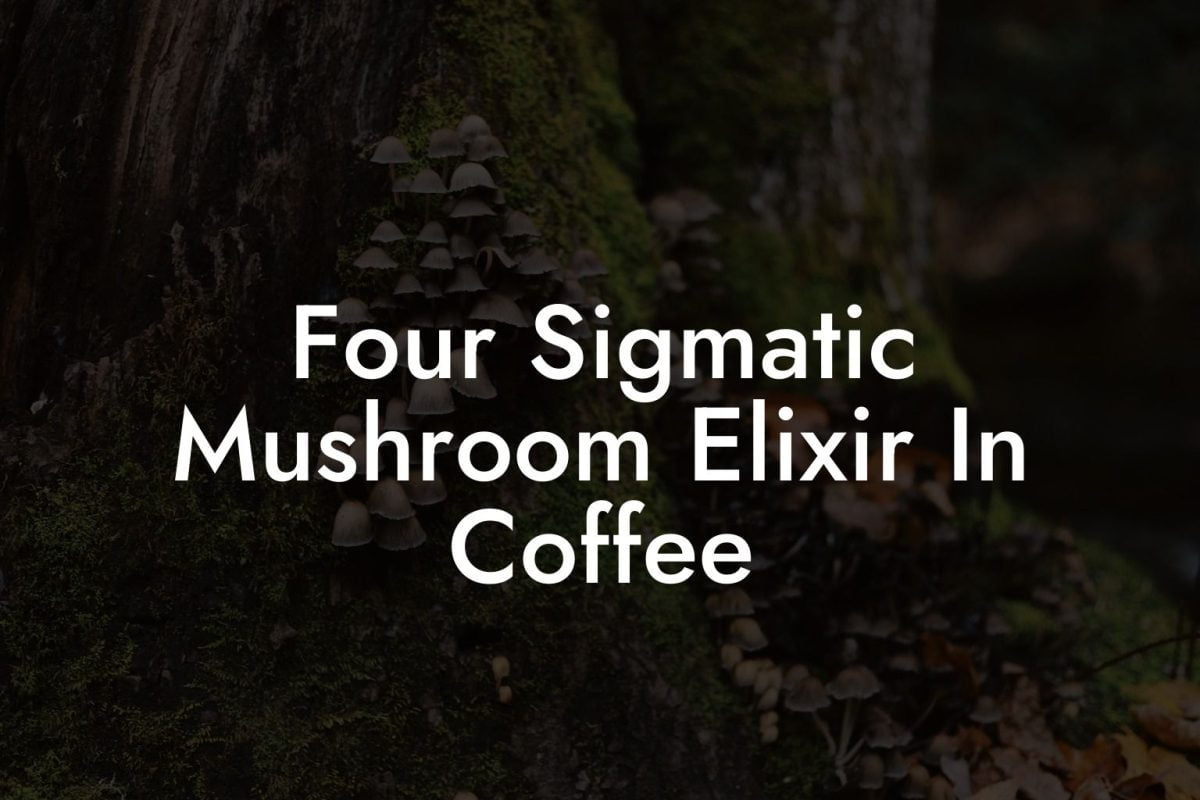Ever wondered if your leftover coffee grounds and that humble bag of rye could double as the secret sauce for your next batch of gourmet mushroom spawn? Buckle up, because we’re diving deep into the wacky, wonderful world of mushroom cultivation, a realm where recycled coffee grounds meet nutrient-packed rye, sparking a fungal party that’s as sustainable as it is delicious. Whether you’re a coffee junkie, an eco-warrior, or a mushroom coffee enthusiast looking to experiment with your brew’s origins, this guide is your go-to source for mixing science with a whole lot of fun.
Quick Links to Useful Sections
- Why Consider Using Coffee Grounds and Rye for Mushroom Spawn?
- The Science Behind Coffee Grounds and Rye as a Substrate
- Coffee Grounds: More Than Just a Caffeine Kick
- Rye: The Carbohydrate-Rich Dynamo
- Step-by-Step Guide to Creating Mushroom Spawn with Coffee Grounds and Rye
- Step 1: Gather Your Ingredients and Tools
- Step 2: Prepare the Rye Grain
- Step 3: Mix in the Coffee Grounds
- Step 4: Sterilization Time
- Step 5: Inoculate with Mushroom Spawn
- Step 6: Incubation and Patience
- Benefits of Utilizing Coffee Grounds and Rye in Mushroom Cultivation
- Troubleshooting and Tips for Successful Mushroom Cultivation
- Common Issues and How to Tackle Them
- Pro Tips for a Fungal Fiesta
- Integrative Approaches to Mushroom Cultivation: Beyond the Substrate
- Companion Cultivation Techniques
- Mindful Cultivation Practices
- Real-Life Success Stories: Coffee Grounds and Rye in Mushroom Farming
- The Urban Farmer’s Journey
- A College Dorm Experiment
- Sustainable Farming on a Budget
- Resources and Community Support: Your Next Steps
- Embarking on Your Fungal Adventure: The New World of Mushroom Coffee
- Mushroom Spawn Cultivation FAQs
- Your Next Brew: From Waste to Wonder
Why Consider Using Coffee Grounds and Rye for Mushroom Spawn?
Let’s face it: In a world where sustainability is the new black, repurposing everyday waste, like coffee grounds, into something extraordinary is nothing short of revolutionary. Combining coffee grounds with rye for mushroom spawn isn’t just a trendy hack; it’s a full-blown sustainable strategy. By reusing coffee grounds, you’re not only reducing waste in landfills, but you’re also providing a rich, nutrient-dense substrate that fuels mycelial growth.
Rye, on the other hand, is a powerhouse grain that has long been celebrated in the mushroom cultivation community. Its dense carbohydrate reserves and balanced nutrient profile make it a superstar in supporting robust mycelium development. When these two ingredients come together, you’re looking at a substrate that’s brimming with energy, a perfect launchpad for a wide variety of gourmet and medicinal mushroom species.
And for you Gen-Z and millennial eco-innovators, this isn’t just about mushrooms, it’s about embracing a lifestyle that champions sustainability, creativity, and mindful consumption. So, next time you brew your cup of joe, remember: those coffee grounds could be the very foundation of your next fungal masterpiece.
The Science Behind Coffee Grounds and Rye as a Substrate
It’s not all just fun and games, there’s a serious scientific backbone to the magic that happens when coffee grounds and rye meet. At its core, mushroom cultivation relies on creating the perfect environment for mycelium (the fungal network) to flourish. Let’s break down what makes these ingredients a match made in microbial heaven.
Looking For The Best Mushroom Coffee? You'll Love These:
Coffee Grounds: More Than Just a Caffeine Kick
Coffee grounds are teeming with organic compounds, including nitrogen, that act as an excellent fertilizer for mushroom mycelium. When you pour your residual coffee over your substrate mix, you’re introducing a burst of energy into the system. That high nitrogen content helps to jump-start the decomposition process, making it easier for the fungi to break down the substrate and convert it into energy.
Furthermore, coffee grounds are naturally acidic, creating a microenvironment that discourages the growth of unwanted bacteria. This means fewer bugs meddling with your precious spawn, giving your mushrooms a cleaner, more controlled growing stage.
Rye: The Carbohydrate-Rich Dynamo
Rye isn’t your average grain when it comes to mushroom cultivation. It serves as an excellent source of carbohydrates, providing a steady energy release that encourages vigorous mycelial expansion. The complex structure of rye’s cell walls offers a slow-burning fuel source, ensuring that the mycelium remains fed throughout its growth cycle.
The symbiotic effect of combining coffee grounds with rye lies in balance, the acidity and rapid nutrient availability of coffee grounds complement the sustained, carbohydrate-rich energy provided by rye. This paves the way for a diverse array of mushroom species to grow efficiently, making it a foolproof strategy for both amateur cultivators and seasoned mycologists.
With this dynamic duo at your disposal, you’re setting up a mini-ecosystem where sustainability meets high-yield mushroom production. The scientific synergy here not only supports robust mycelium networks but also champions an eco-friendly approach to growing your very own fungi.
Step-by-Step Guide to Creating Mushroom Spawn with Coffee Grounds and Rye
Ready to get your hands dirty? Here’s a detailed, step-by-step guide to creating mushroom spawn using coffee grounds and rye that’s as easy as it is effective. Whether you’re an urban gardener working with limited space or a mushroom coffee enthusiast ready to explore cultivation, these steps have got you covered.
Step 1: Gather Your Ingredients and Tools
Before you start, you’ll need to assemble everything in your fungal workshop:
- Used Coffee Grounds: Collect freshly used coffee grounds. Ensure they are cooled and free from additives like sugar or cream.
- Rye Grain: Purchase organic rye grain from a trusted supplier or local health store.
- Sterilized Jars or Bags: If you’re serious about contamination control, invest in some sterilized mason jars or autoclavable bags.
- Pressure Cooker or Autoclave: This is essential for sterilizing your substrate. Even if you’re on a budget, a large pot with a secure lid can work in a pinch.
- Mushroom Spawn Culture: Choose a mushroom strain that you’re excited about, oyster, shiitake, and lion’s mane all thrive on these substrates.
- Spray Bottle: For maintaining moisture levels during incubation.
- Gloves and Face Mask: To ensure that you keep your work environment as sterile as possible.
Step 2: Prepare the Rye Grain
The first step in substrate preparation is to clean and soak your rye grain. Rinse the grain thoroughly to remove any dirt or debris, then soak it in water for 8-12 hours. This soaking process allows the grains to absorb water, making them softer and more receptive to mycelial colonization.
After soaking, drain the grain and give it a final rinse. Fill your sterilized jars or bags with the rye, ensuring not to pack it too tightly; you want plenty of room for the mycelium to breathe.
Step 3: Mix in the Coffee Grounds
Once your rye grain is prepped, it’s time to introduce the coffee grounds. Gently mix equal parts of cooled coffee grounds into the rye. The goal here is to create a uniform blend where the coffee’s nutrients are evenly distributed. Be mindful that the mixture should be damp but not overly wet, aim for moisture content resembling a wrung-out sponge.
This mix allows the coffee grounds to provide a quick nutrient boost while the rye sustains long-term growth. If you’re a perfectionist (or just want to avoid botched batches), consider testing the moisture level by squeezing a handful; a few drops should escape, but it shouldn’t be soaking.
Step 4: Sterilization Time
The next critical step is sterilizing your substrate blend to reduce the risk of contamination. Place your jars or bags into your pressure cooker and run it at 15 psi for about 90 minutes. If you’re using a large pot, ensure you steam the jars for at least 2 hours, though a pressure cooker is highly recommended for best results.
Sterilization might sound like a drag, but trust us: it’s the secret sauce that keeps pesky microbes at bay, ensuring only your chosen mushroom spawn gets to party.
Step 5: Inoculate with Mushroom Spawn
Once the substrate has cooled completely, it’s time to inoculate. Work in a clean, draft-free space, ideally a dedicated mycology workspace with a laminar flow hood if available. With your gloves on and tools sanitized, add your mushroom spawn to the jars or bags and mix it gently into the substrate. The colonization process begins here.
Make sure that the spawn is evenly distributed throughout the substrate. Some cultivators prefer to use spontaneous mixing techniques, while others might layer the spawn into the substrate. Experiment to see what works best for you.
Step 6: Incubation and Patience
Now that your substrate is inoculated, seal your jars or bags properly and place them in a dark, warm area (ideally between 70-80°F or 21-27°C). The incubation period is when the mycelium takes over the substrate, a process that can take anywhere from 10 to 14 days.
During this phase, resist the urge to peek constantly, impatience is the enemy of mycelial perfection! Check periodically for signs of contamination (unusual smells or colors) and mist lightly if the substrate appears too dry.
Once the substrate is fully colonized (it should appear white and fuzzy all over), congrats! You’ve created a high-quality spawn ready to be used in your mushroom cultivation projects.
Benefits of Utilizing Coffee Grounds and Rye in Mushroom Cultivation
So, you’re probably wondering: aside from the sheer coolness of using my kitchen waste to grow mushrooms, what are the real benefits? Spoiler alert, they’re pretty awesome.
Eco-Friendly and Sustainable: Repurposing coffee grounds and rye is a prime example of circular economy principles in action. By reducing waste and minimizing the need for synthetic fertilizers, you’re contributing to a healthier planet.
Cost-Effective: Buying commercial substrates or spawn can burn a hole in your wallet. By using readily available coffee grounds and affordable rye grain, you keep costs low while maintaining high yield potential. Plus, if you’re brewing coffee every day, you’ve got a never-ending supply of grounds just waiting to be transformed.
Boosted Nutritional Profile: Coffee grounds provide a nitrogen boost that kick-starts the decomposition process, while rye offers a steady stream of carbohydrates. This dynamic duo creates the perfect nutritional environment for fast and strong mycelial growth, leading to higher yields and better-quality mushrooms.
Reduced Contamination Risk: The natural acidity of coffee grounds can help ward off harmful bacteria. When paired with properly sterilized rye, it creates a robust substrate that’s less prone to unwanted microbial invaders.
Enhanced Flavor in Mushroom Coffee: For lovers of mushroom coffee, growing your own mushrooms ensures the freshest ingredients possible. The unique flavor profile imparted by mushrooms grown on this substrate can elevate your brew, giving it a distinct, earthy taste with a hint of sustainability.
These benefits not only make mushroom cultivation more accessible but also align perfectly with the values of conscious consumers and eco-friendly innovators. Embracing this method means you’re not just growing mushrooms, you’re cultivating a lifestyle that prioritizes sustainability, creativity, and health.
Troubleshooting and Tips for Successful Mushroom Cultivation
Even in the best-laid fungal plans, some hiccups are bound to happen. Here are some common challenges you might face when using coffee grounds and rye for spawn, along with pro tips to keep your cultivation game strong.
Common Issues and How to Tackle Them
Excess Moisture or Dryness: Finding the right moisture balance is key. Too much water and your substrate becomes a breeding ground for bacteria; too little, and your mycelium may struggle to colonize. Use a spray bottle to carefully adjust moisture levels and aim for that “wrung-out sponge” consistency.
Contamination: While sterilization drastically reduces the risk of contamination, it can still occur if your workspace isn’t sterile enough. Always work in a clean space, and if you notice any off colors (like green, black, or bright yellows) or funky smells, it might be time to discard the batch and start over.
Slow or Stalled Colonization: Temperature and humidity play vital roles in mycelial growth. If your spawn is moving slower than expected, check that your incubation area is within the ideal temperature range. Additionally, ensure that your substrate isn’t too compact, as good airflow promotes rapid colonization.
Pro Tips for a Fungal Fiesta
Use Fresh Coffee Grounds: The fresher the coffee grounds, the better. Over time, grounds can start to break down and lose their nutrient potency, so try to use them within 24 hours of brewing.
Experiment with Ratios: While a 1:1 ratio of coffee grounds to rye is a solid starting point, don’t be afraid to tweak the ratios depending on your specific mushroom strain or environmental conditions. A bit more coffee might accelerate colonization, while additional rye could sustain longer growth phases.
Invest in Quality Spawn Culture: No matter how perfect your substrate is, high-quality spawn is essential for success. Purchase from reputable suppliers or consider cultivating your own if you’re up for a fun challenge.
Document Your Process: Keep a cultivation journal. Noting down your techniques, ingredient ratios, and incubation conditions can help you troubleshoot issues and fine-tune your process for future batches.
By staying proactive and observant, you’ll fine-tune your approach, overcome common pitfalls, and pave the way for successful mushroom cultivation every time.
Integrative Approaches to Mushroom Cultivation: Beyond the Substrate
While the coffee grounds and rye substrate is the star of the show, mushroom cultivation is a symphony of various practices that work together to create an optimal growing environment. Here are some integrative strategies to elevate your cultivation skills.
Companion Cultivation Techniques
Think beyond the primary substrate, consider integrating companion techniques such as:
- Layering Organic Matter: Add additional layers of sterilized straw, sawdust, or even coir on top of your substrate once colonization is underway. This not only supports mycelial expansion but also helps retain moisture.
- Supplementing with Additional Nutrients: Some cultivators enhance their substrate by adding a small amount of gypsum or other mineral supplements. This can stabilize pH levels and further promote robust growth.
- Environmental Control: Consider investing in a small humidifier or temperature controller for your incubation area. Consistent humidity and temperature are vital for rapid, healthy growth.
Mindful Cultivation Practices
Much like a mindful meditation session, cultivating mushrooms can be a therapeutic, even transformative process. Embrace the journey:
- Set a Dedicated Space: Whether it’s a spare corner in your apartment or a dedicated room, having a designated cultivation area can help maintain optimal conditions and keep distractions at bay.
- Stay Present: Regularly check on your substrate, but give it the space it needs. Avoid over-checking to prevent temperature and humidity fluctuations.
- Celebrate Small Wins: Every sign of white, fuzzy mycelium is a victory. Document your progress through photos and notes, and share your triumphs with fellow cultivators online.
In essence, integrating these supplementary techniques with your core coffee grounds and rye substrate not only maximizes your potential yield but also turns mushroom cultivation into a holistic hobby, a perfect blend of science, sustainability, and soulful creativity.
Real-Life Success Stories: Coffee Grounds and Rye in Mushroom Farming
Sometimes, the best inspiration comes from real-life success stories. Let’s take a look at a few tales from fellow cultivators who have successfully harnessed the power of coffee grounds and rye.
The Urban Farmer’s Journey
Meet Alex, an urban dweller with limited space and a big passion for sustainability. Alex started collecting coffee grounds from his favorite local cafe and paired them with organic rye purchased at a local market. With a bit of DIY ingenuity, he transformed his apartment’s windowsill into a mini mushroom farm. Not only did he achieve impressive yields of oyster mushrooms, but he also started a vibrant online community of fellow urban cultivators who embraced his eco-friendly approach.
A College Dorm Experiment
Then there’s Jamie, a college student who turned a late-night research assignment into a hands-on experiment. With limited resources and a dorm-room kitchen, Jamie repurposed leftover coffee grounds and bought a bag of rye on a tight budget. The result? A surprising full colonization process that not only provided fresh mushrooms for culinary experiments but also sparked interest among roommates in sustainable living and DIY biohacking.
Sustainable Farming on a Budget
Sarah, a millennial returning to her rural roots, found that using coffee grounds and rye was a game-changer for sustainable farming practices. By integrating this substrate technique into her small farm, she reduced input costs significantly while achieving high-quality yields of shiitake and lion’s mane mushrooms. Today, Sarah is a vocal advocate for repurposing organic waste and shares her techniques at local farmer’s markets and community workshops.
These stories serve as a reminder that regardless of your environment, be it a bustling city apartment, a cramped dorm room, or a spacious rural homestead, innovative mushroom cultivation is within reach. The combination of coffee grounds and rye isn’t just a method; it’s a movement toward sustainable, creative, and accessible food production.
Resources and Community Support: Your Next Steps
Ready to take your mushroom cultivation journey to the next level? There’s a whole community out there of like-minded individuals who are passionate about sustainable agriculture, DIY biohacking, and mushroom coffee. Here are some resources and communities to help you connect, learn, and share your experiences:
- Online Forums and Social Media Groups: Websites like Shroomery, Reddit communities (r/mycology, r/mushrooms), and Facebook groups are treasure troves of tips, success stories, and troubleshooting advice.
- YouTube Channels: Look for channels dedicated to mushroom cultivation. Visual guides can be especially helpful for seeing the step-by-step process in action.
- Local Workshops and Meetups: Check out community centers, local farms, or university extension programs that occasionally offer classes on sustainable farming and mushroom cultivation.
- Books and Digital Guides: There are numerous eBooks and printed guides that provide in-depth information on mushroom growing techniques. These resources can serve as a handy reference for both beginners and seasoned cultivators.
- Environmental and Sustainability Blogs: Many bloggers share innovative ways to recycle and repurpose everyday waste. Their insights can offer creative ideas to experiment with your coffee grounds and rye substrate.
Embarking on your own fungal adventure doesn’t have to be a solo journey. Leveraging these platforms not only provides practical advice but also connects you with an inspiring community dedicated to eco-friendly innovation. Share your progress, ask questions, and inspire others by showcasing your mushroom masterpieces.
Embarking on Your Fungal Adventure: The New World of Mushroom Coffee
As we wrap up this deep dive into the world of coffee grounds and rye mushroom spawn, remember that every great venture starts with a single, sometimes curious step. Integrating these two everyday ingredients into your cultivation process isn’t just about growing mushrooms, it’s about transforming waste into wonder and creating a tangible connection between what you consume and how you nurture.
For millennial and Gen-Z innovators, this is more than a hobby; it’s a declaration that sustainability and creativity can go hand in hand. Imagine sipping a cup of mushroom coffee, knowing that every sip tells the tale of recycled coffee grounds, nutrient-rich rye, and your very own homemade mushroom garden. In a world obsessed with convenience, this is a return to the roots of mindful living and organic production.
As you experiment with different mushroom strains, tweak your coffee-to-rye ratios, or simply marvel at the mesmerizing growth of mycelium, remember that innovation thrives when you’re willing to question the status quo. Embrace the process, celebrate the small victories, and use every challenge as a stepping stone toward a greener, more sustainable future.
Whether you’re a seasoned cultivator or a curious newbie ready to roll up your sleeves, the tools are in your hands to create a microcosm of sustainability and creativity. Let your next cup of coffee be a reminder that even the simplest ingredients can spark scientific, culinary, and environmental revolutions. Your mushroom journey isn’t just about the fungi, it’s about creating a legacy of mindful consumption and sustainable living.
So, grab those coffee grounds, weigh out that rye, and get ready to witness a mini-revolution in your kitchen, one where every mushroom you grow is a testament to innovation, sustainability, and the sheer joy of transforming waste into wonder.
Mushroom Spawn Cultivation FAQs
Got questions about using coffee grounds and rye for mushroom spawn? We’ve got you covered with some of the most frequently asked questions below.
1. Can I use any type of coffee grounds for mushroom spawn?
Yes! Fresh, used coffee grounds (without additives like sugar or cream) work best. The nitrogen and natural acidity in coffee grounds provide a nourishing environment for the mycelium.
2. What type of rye should I use?
Organic rye grain is ideal, as it offers a balanced nutritional profile and high carbohydrate content that fuels strong mycelial growth.
3. How do I achieve the right moisture balance in my substrate?
Aim for a “wrung-out sponge” consistency. The substrate should be damp enough to provide moisture but not so wet that it encourages bacterial growth.
4. What is the ideal incubation temperature for mycelial colonization?
Most mushroom species prefer an incubation temperature between 70°F and 80°F (21°C to 27°C). Consistency in temperature helps speed up the colonization process.
5. How do I prevent contamination during the process?
Sterilize your substrate using a pressure cooker or autoclave, maintain a clean workspace, and always use sanitized tools and gloves when handling your spawn.
6. Can I reuse my coffee grounds in another batch?
It’s best to use fresh coffee grounds for each batch to ensure maximum nutrient availability and reduce the risks of contamination from residual organisms.
7. What is the typical colonization timeframe?
Generally, mycelial colonization occurs within 10-14 days under optimal conditions. However, this duration can vary depending on your specific setup and mushroom species.
8. Is it possible to experiment with different mushroom strains?
Absolutely! Different mushroom species may thrive on this substrate, but you might need to tweak the moisture levels, incubation temperature, or spawn ratios for optimal growth.
9. Do coffee grounds affect the flavor of the mushrooms?
In some cases, the nutrients from coffee grounds can influence the flavor profile of cultivated mushrooms, potentially enhancing the earthy, robust notes in your mushroom coffee brew.
10. Where can I find more resources on sustainable mushroom cultivation?
There are numerous online communities, blogs, and YouTube channels dedicated to sustainable mushroom cultivation. Engaging in these communities can provide additional tips and support for your journey.
Your Next Brew: From Waste to Wonder
The journey from used coffee grounds to a flourishing mushroom farm represents more than just an experimental kitchen project, it symbolizes a shift towards sustainability, innovation, and a hands-on approach to environmental stewardship. Every cup of mushroom coffee you enjoy can serve as a reminder of the endless possibilities when we dare to reimagine waste as a resource.
By harnessing the combined powers of nutrient-rich coffee grounds and the carbohydrate dynamism of rye, you’re not only crafting a superior substrate for mushroom spawn but also joining a community that embraces green living and scientific curiosity. It’s about being resourceful, creative, and confident in your ability to innovate, even when it comes to something as seemingly simple as your morning coffee.
So, whether you’re a budding mycologist or a seasoned cultivator inspired by the quirky charm of mushroom coffee, let today be the day you experiment boldly. Perfect your ratios, share your progress with an ever-growing online community, and revel in the knowledge that your creative process is making the world a greener place, one mushroom at a time.
Your future cup of coffee isn’t just a beverage, it’s a testament to sustainable innovation, a badge of eco-friendly pride, and a deliciously rich invitation to explore the boundless potential of nature. Cheers to turning everyday waste into culinary and environmental gold!
Looking For The Best Mushroom Coffee? You'll Love These:
Useful Interruption: Dive deeper into the world of Mushroom Coffee with our most popular sections. If there is anything you think is missing or anything you would love for us to write about, just give us a shout.
- Mushroom Coffee Equipment & Product Reviews
- Mushroom Coffee Recipes & Creative Variations
- Mushroom Coffee Guides & Troubleshooting
- Mushroom Coffee Brewing & Preparation Techniques
- Model Rocket Advanced Rocketry & Innovations
- Mushroom Coffee Fundamentals
- Model Rocket Equipment Reviews & Digital Tools
- Mushroom Coffee Health Benefits & Wellness
- Mushroom Coffee Mycology & Scientific Insights
- Mushroom Coffee Community, Lifestyle & Engagement
I tried mushroom coffee this morning and told my friend, "This brew is spore-tacular!" He shot back, "Guess that's why it's such a cap-tivating way to kickstart your day!"

